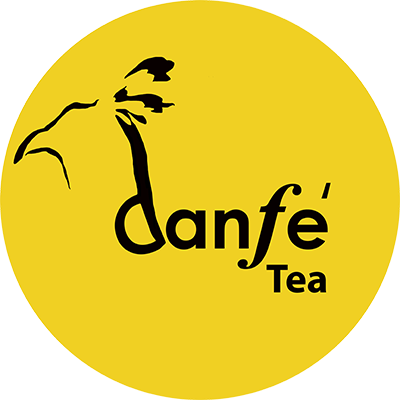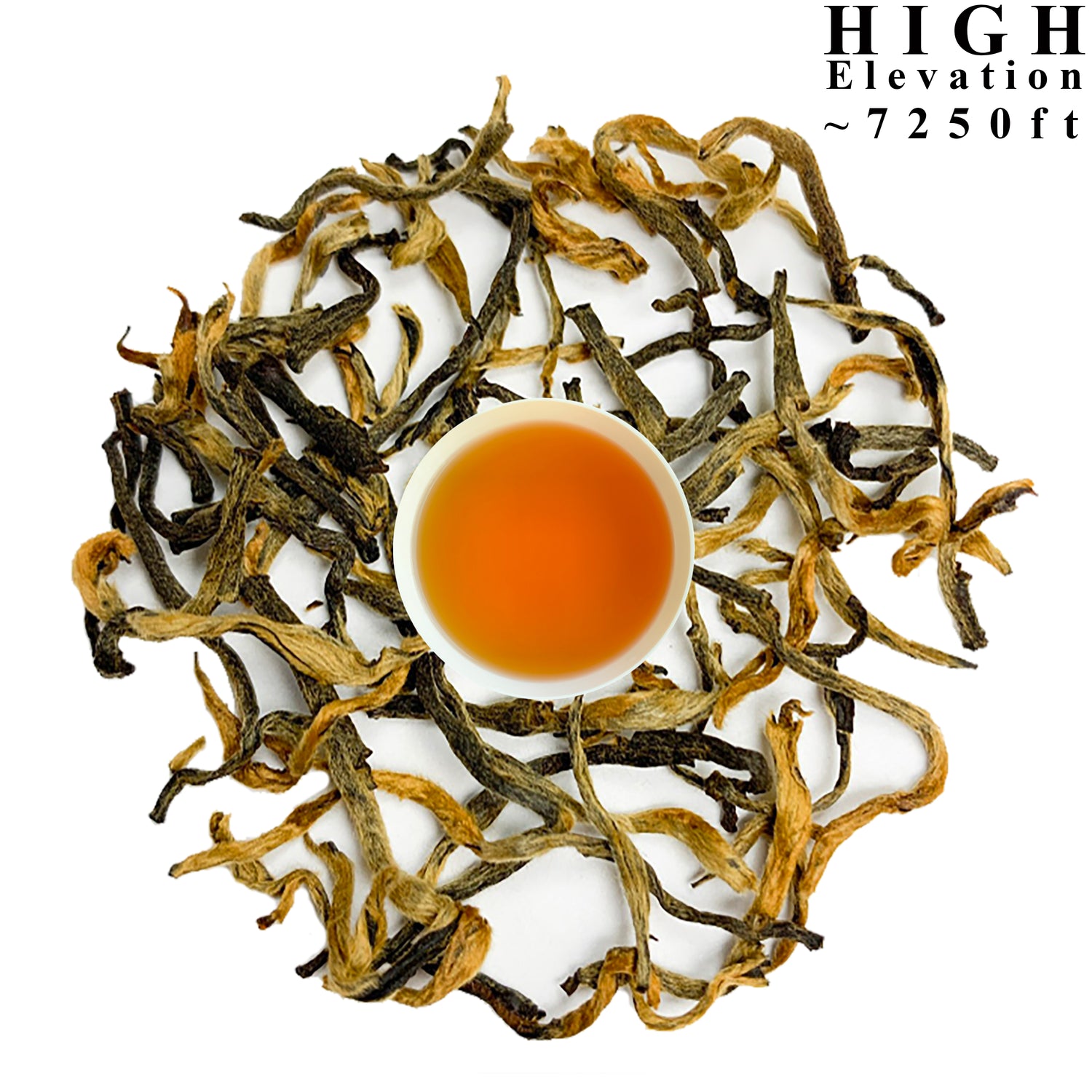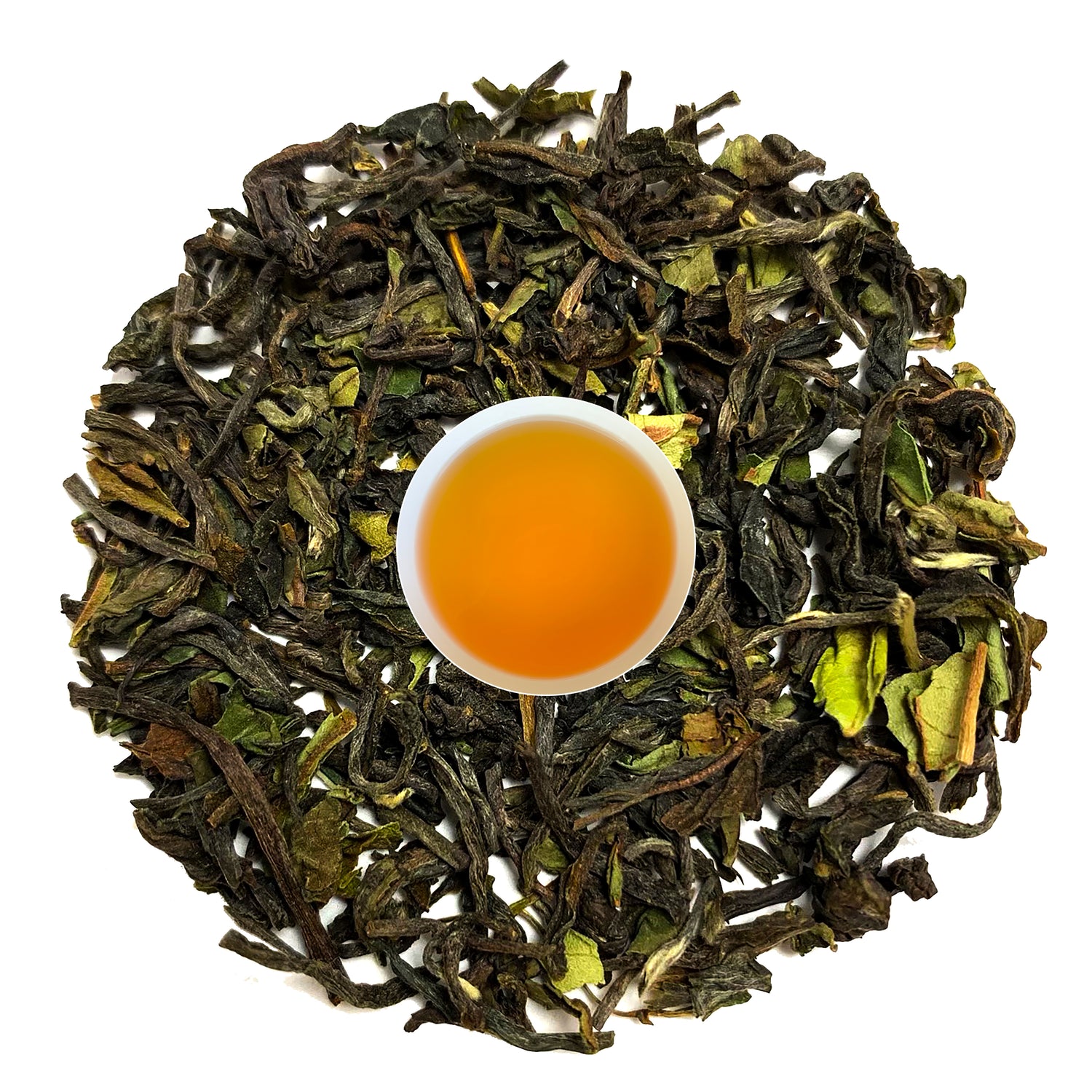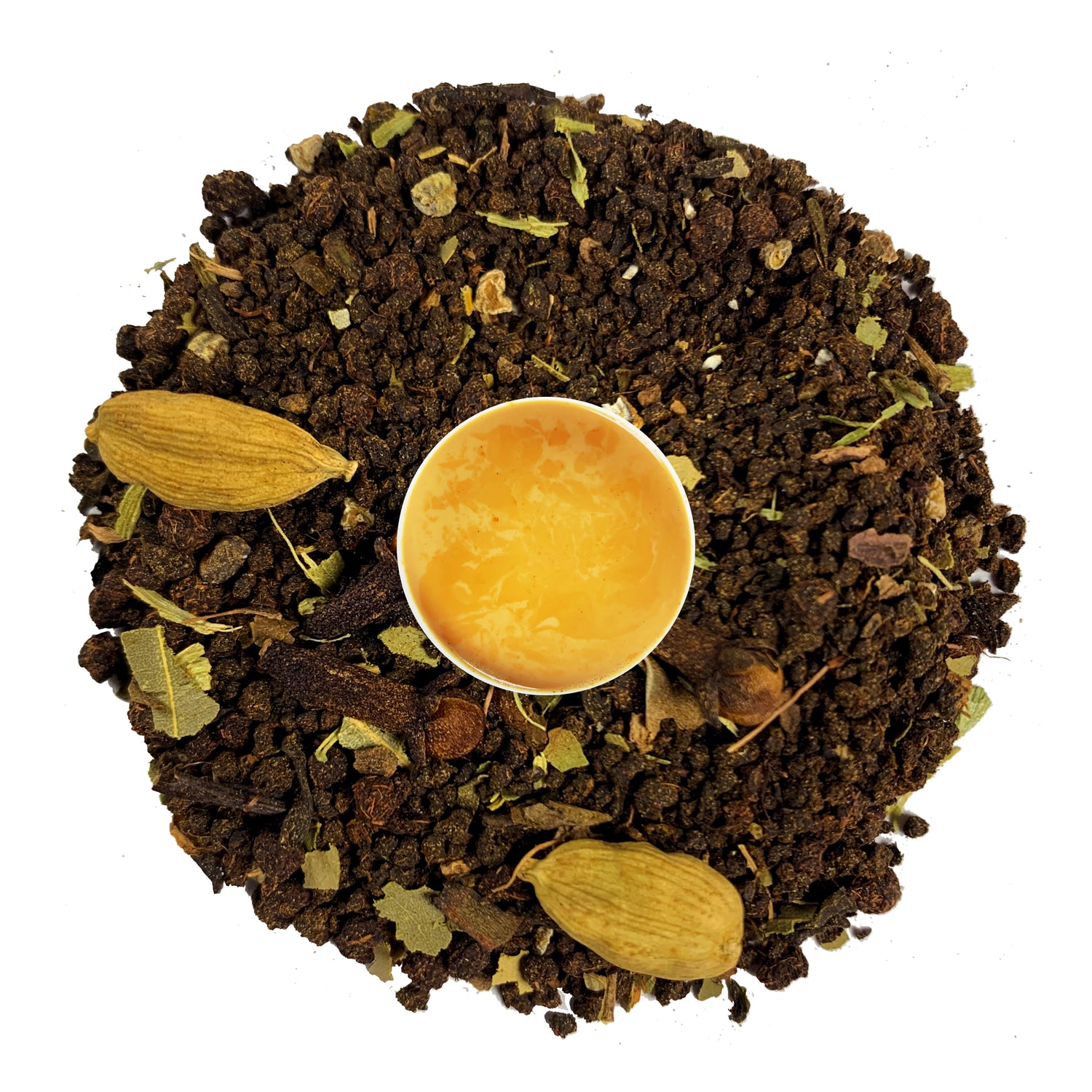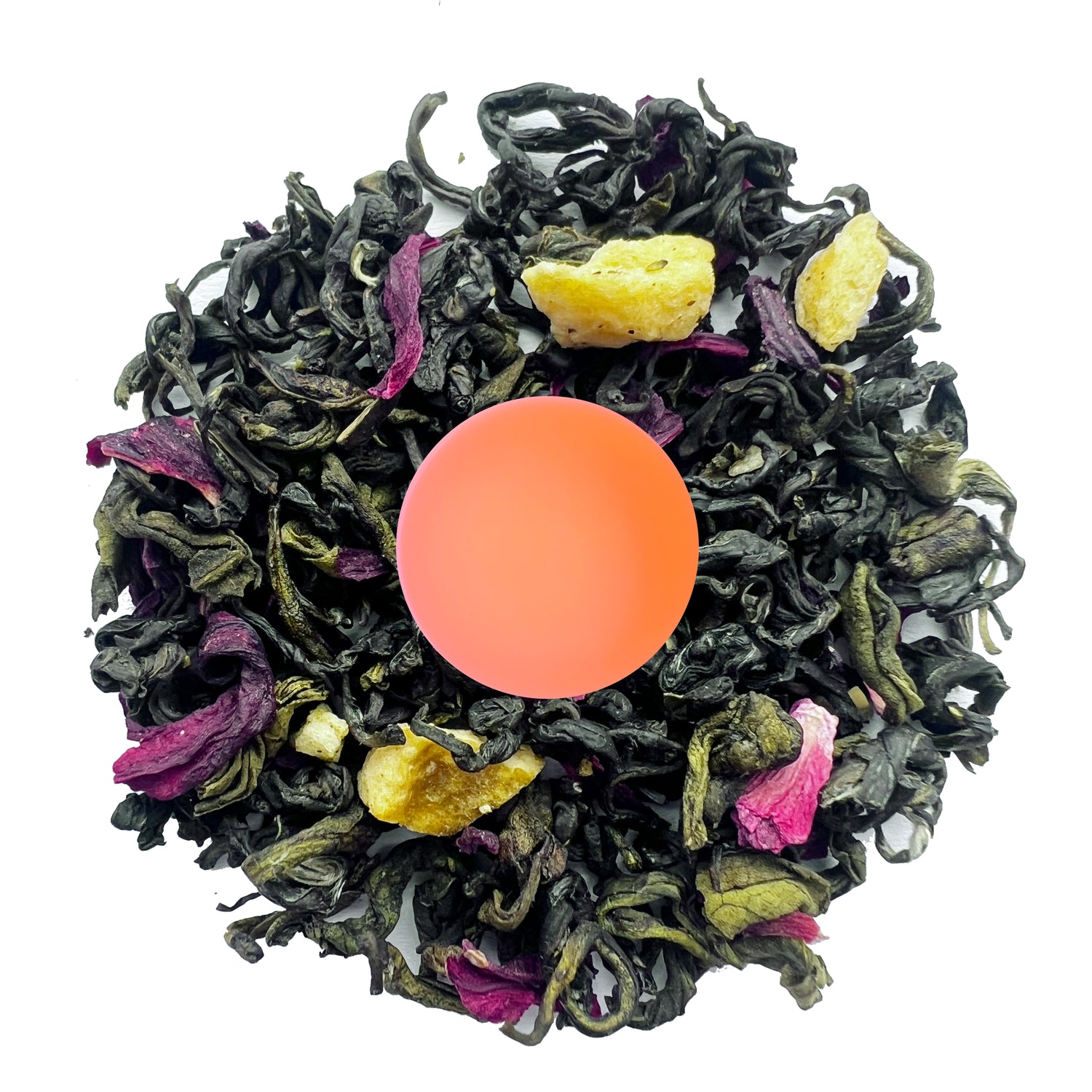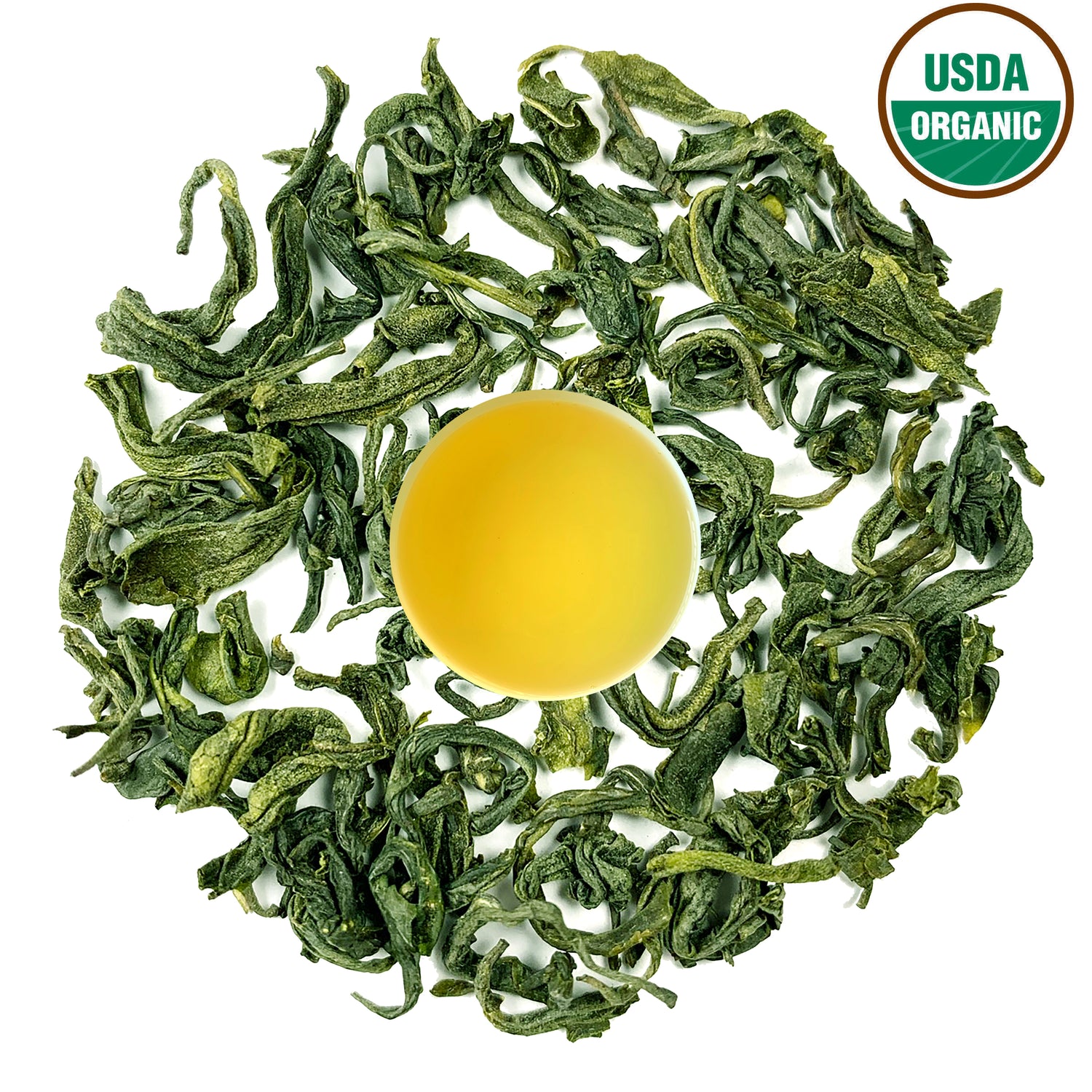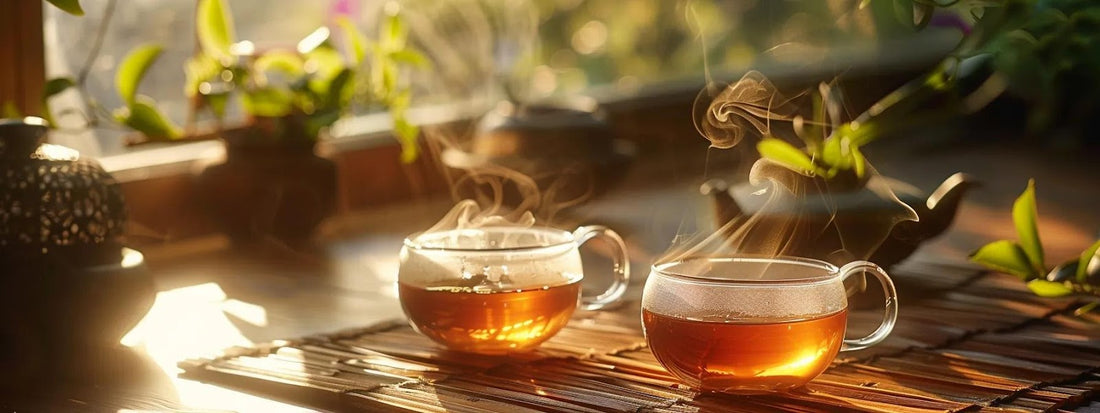
Oolong Tea Advantages: Health Benefits, Flavor, and Caffeine Compared
With so many tea varieties on the market, it’s natural to wonder which one is best for your health. Oolong tea, a traditional Chinese tea made from the Camellia sinensis plant, sits perfectly between green and black teas. Its semi-oxidized process gives it a unique flavor and impressive health profile.
In this guide, we’ll break down the advantages of oolong tea, compare it to black and herbal teas, explore its flavor, and discuss caffeine content. If you’re curious about Himalayan oolong or looking for a buying guide, this is your one-stop resource.
Key Health Benefits of Oolong Tea
Oolong tea, derived from the Camellia sinensis plant, offers unique health benefits that are worth exploring. For those new to the world of tea, an oolongtea buying guide can be invaluable. This section covers how oolong tea can positively impact metabolism and aid in weight loss, along with a detailed comparison of its antioxidant properties against black teas. Notably, components like epigallocatechin gallate enhance its appeal for those mindful of their diet, including consumers in Bolivia and beyond. Additionally, exploring himalayan oolongtea benefits can provide deeper insights into its advantages.
Supports Metabolism and Weight Loss
A study showed that oolong tea can increase calorie burn and fat oxidation, making it a natural companion for weight management. Many tea drinkers choose oolong because it boosts energy without the jitters of coffee.
Improves Heart Health & May Help With Type 2 Diabetes
Regular oolong consumption may help regulate blood sugar levels, lowering the risk of type 2 diabetes. It also supports healthy cholesterol levels, contributing to long-term cardiovascular health.
Rich in Antioxidants
Oolong contains powerful polyphenols and catechins that fight oxidative stress, protecting cells from damage and slowing signs of aging. Compared to black tea, it strikes a balance—retaining some green tea antioxidants while offering the fuller taste of black tea.
Supports Digestion & Oral Health
Oolong tea can prevent cavities and improve gut balance, making it a great after-meal drink. Its mild caffeine and theanine content help smooth digestion and reduce bloating.
Helps Reduce Stress
Thanks to the amino acid L-theanine, oolong promotes calmness and mental clarity. Many tea drinkers describe it as the perfect balance of relaxation and focus.
Assess the Unique Health Benefits of OolongTea for Wellness
Oolong tea is a fantastic choice for those looking to enhance their wellness routine, especially given its unique health benefits compared to herbal and black teas. For those seeking everything about oolong teas, research from the United States Department of Agriculture highlights how the enzymes present in oolong tea can assist in metabolism, making it a beneficial option for weight management. Additionally, resources like an oolong tea buying guide can help individuals in regions like China or even remote places like Tristan da Cunha to enjoy oolong's advantages, whether they are health-conscious or breastfeeding, as it provides a gentle boost without the harshness often found in other tea varieties.
Identify How OolongTea Affects Metabolism and Weight Loss
Oolongtea has been shown to have a favorable impact on metabolism and can aid in weight loss efforts. Research indicates that its unique combination of compounds helps the body burn fat more efficiently, making it a solid choice for those looking to manage their weight without sacrificing flavor. With its low iron content and potential cognitive benefits, oolongtea becomes particularly appealing to consumers in places like Djibouti and Singapore, where health-conscious choices are in high demand. Even in the British Virgin Islands, residents can appreciate oolong's role in supporting metabolism while enjoying the social aspects of tea drinking. For those seeking more information, the oolongtea buying guide and himalayan oolongtea benefits sections are helpful resources.
Compare Antioxidant Properties of Oolong Versus Black Teas
it comes to antioxidants, oolongtea stands out with a profile that is distinct yet complementary to black tea. The antioxidant properties found in oolongtea, especially those originating from Taiwan, can help protect the body from oxidative stress and support overall health. Utilizing an oolongtea buying guide, enthusiasts can explore varieties that offer himalayan oolongtea benefits. In comparison, black tea tends to have higher levels of certain flavonoids, but the unique processing of oolong leads to a blend of benefits that appeal to drinkers in places like Jamaica and Nigeria. This diversity makes oolong a great addition to any teaware collection, encouraging tea lovers from the Cayman Islands and beyond to experiment with its rich flavors while reaping
Flavor Profile: What Makes Oolong Unique?
Unlike herbal teas that are caffeine-free and black teas that are bold, oolong strikes a delicate balance. Its flavor ranges from floral and fruity to creamy and toasty, depending on processing.
- Himalayan Oolong Tea (Danfe Tea): Known for its smooth, lightly floral taste with earthy undertones.
- Milk Oolong: Creamy, buttery flavor that feels indulgent.
- Gaba Oolong: Fruity, relaxing, and often chosen for stress relief.
Caffeine Levels Compared
- Oolong Tea: ~30–50 mg per cup → moderate energy boost.
- Green Tea: ~20–45 mg per cup → lighter, cleaner taste.
- Black Tea: ~40–70 mg per cup → strongest kick.
- White Tea: ~15–30 mg per cup → very mild.
This makes oolong an excellent middle ground for those wanting alertness without overstimulation.
Best Brewing Tips for Oolong
- Heat water to 185–195°F (just below boiling).
- Steep for 3–5 minutes to extract full flavor without bitterness.
- Re-steep leaves 2–3 times—oolong is famous for its layered taste.
Potential Side Effects & Safety
While oolong tea is safe for most people, excessive intake (more than 5–6 cups daily) may cause caffeine-related issues such as jitters, insomnia, or interference with iron absorption. Those with heart conditions or on certain medications should consult a doctor before frequent consumption.
Describe the Distinct Taste Characteristics of OolongTea
Oolongtea boasts a taste profile that balances floral and fruity notes, making it a delight for the palate. For instance, varieties infused with jasmine add an aromatic flair that enhances the overall experience. For those seeking more information, an oolongtea buying guide can be very helpful. Tea lovers in the United Kingdom or Sri Lanka appreciate the soothing qualities of oolong, particularly those looking to maintain a healthy weight while enjoying rich flavors. Additionally, the himalayan oolongtea benefits contribute to its popularity among health-conscious individuals. Its unique qualities make it a popular choice in diverse regions, including North Macedonia, where enthusiasts seek both flavor and weight loss benefits in every cup.
Analyze Flavor Differences Between Oolong and Green Tea Options
When comparing the flavors of oolong and green tea, distinct differences emerge that can influence a tea lover’s choice. Oolong tea often presents a rich, layered taste profile, with subtle floral notes that can evoke the scent of fresh oranges, appealing to those in Algeria and elsewhere who appreciate complexity. In contrast, green tea typically offers a lighter, more vegetal flavor, largely due to its high catechin content, which plays a role in its taste and health benefits for artery health. This contrast allows consumers from various regions, like Guyana, to select the tea that best suits their palate while maximizing their wellness goals. For those interested in further exploring their options, the what does green tea taste like provides a comprehensive oolong tea buying guide and everything about oolong teas.
Highlight Popular Blends of OolongTea and Their Flavor Notes
Among the popular blends of oolongtea, Gaba Oolong and MilkOolong stand out for their distinct flavor notes and health benefits. Gaba Oolong, known for its smooth and slightly fruity taste, may help boost immunity while offering a relaxing experience—a perfect accompaniment for post-exercise recovery. On the other hand, MilkOolong delights with its rich, creamy texture and subtle sweetness, often enhanced with a hint of spice. This variety is especially enjoyed in places like Taiwan , where tea enthusiasts appreciate its comforting flavors while seeking wellness benefits.
Investigate Caffeine Content in OolongTea Versus Other Teas

Oolongtea contains a moderate caffeine level that can provide an energy boost while contributing to wellness. This section will measure the caffeine content in oolong in comparison to black, green, and white teas, exploring how these levels may influence blood in areas like inflammation. The discussion will also touch on caffeine's side effects, particularly for consumers in regions such as South Sudan, Mozambique, and the Caribbean Netherlands. caffeine levels in teas
Understand the Preparation Methods for Different Tea Types
Best brewing practices play a crucial role in enhancing the taste of oolongtea. It's essential to use the right water temperature for optimal flavor, ideally boiling water cooled to around 190°F. Steeping time is another key factor; a range of 3 to 5 minutes allows for perfect flavor extraction. These tips cater to oolong enthusiasts in places like the South Sandwich Islands and Burundi, ensuring a delightful tea experience that can complement various medications.
Outline Best Brewing Practices Specifically for OolongTea
For the best experience with oolongtea, it's essential to understand optimal brewing practices. Using water that's heated to about 190°F ensures that you extract rich flavors without scalding the leaves. By steeping for 3 to 5 minutes, oolong can release its beneficial compounds, such as theanine, which promotes relaxation and aids in reducing fat levels in the body. Incorporating a splash of citrus can enhance the vitamin C content, making it a healthy option for anyone wanting a refreshing therapy in their daily routine, even for tea drinkers in Guatemala who appreciate fine brews.
Recommend the Right Water Temperature for Optimal Taste
To truly appreciate oolongtea, users should pay attention to the water temperature during preparation. Using water that reaches around 190°F is ideal, as it allows the tea’s polyphenols to shine without scalding the leaves. This temperature can draw out the rich flavors and benefits of this semi-fermented tea, providing an enjoyable experience for tea enthusiasts in places like Taiwan and French Guiana, who are looking to elevate their tea enjoyment while considering the health benefits.
Share Tips on Steeping Time for Perfect Flavor Extraction
Steepingoolongtea correctly is crucial for maximizing its rich flavors and health benefits. For optimal extraction, it's best to steep the tealeaves for about 3 to 5 minutes, which allows the magnesium-rich compounds to infuse into the water without bitterness. Whether you're sipping a Fujianoolong or enjoying tea sourced from São Tomé, this precise timing can reduce the risk of discomfort or pain commonly associated with over-steeping, making it an excellent choice for health care enthusiasts seeking flavorful yet soothing beverages.
Contemplate Health Risks Associated With OolongTea Consumption
High intake of oolongtea can lead to potential side effects that consumers should be aware of, including its interactions with certain medications. Individuals in places like Finland and Tunisia may find it particularly relevant to consider how oolong affects health conditions. This section will examine the risks associated with excessive consumption, medication interactions, and safety precautions for those dealing with specific health issues.
Identify Potential Side Effects of High OolongTea Intake
High intake of oolongtea may lead to some side effects that those in places like Togo or Aruba should keep in mind. This tea contains moderate caffeine levels, which can sometimes result in increased energy jitters for sensitive individuals, particularly at elevated heights or in regions like Comoros. It's essential for consumers to monitor their intake, especially if they’re taking medications or have specific health conditions, as excessive consumption can cause digestive discomfort or affect blood patterns.
Discuss Interactions Between OolongTea and Certain Medications
Oolongtea can interact with certain medications, making it essential for users to be aware of potential effects on their health. For instance, those taking medication for bonehealth should consult a healthcare provider, as oolong may influence calcium absorption. Additionally, individuals who enjoy flavored teas like masala chai alongside their meals should note that oolong’s caffeine content can affect the absorption of carbohydrates in some cases. Consumers in regions like Polynesia should remain informed about these interactions to fully enjoy their tea experience while maintaining their overall wellness.
Analyze Safety Considerations for Specific Health Conditions
When enjoying oolongtea, it's essential to consider specific health conditions that may be affected by its consumption. For example, individuals in Suriname or Portugal dealing with heart issues should be mindful of oolong's caffeine content, as it can influence heart rate and bloodpressure. Similarly, those living in Slovakia managing weight may want to be cautious of oolong's interaction with medications, especially if combined with substances like honey to sweeten the drink, leading to unexpected effects if consumed in mass quantities.
Review Popular OolongTea Brands and Their Unique Offerings

This section highlights reputable brands known for high-quality oolongtea, exploring the diverse types available in the market. It will also cover customer favorites among different oolong selections, addressing common concerns like"does oolong tea have caffeine," alongside the implications of roasting and potential risk factors such as headaches. Each brand and variety offers unique characteristics that cater to tea enthusiasts everywhere, including camellia sinensis .
List Reputable Brands Known for High-Quality OolongTea
Several brands stand out when it comes to high-quality oolongtea, appealing to tea lovers worldwide, including those in Sweden and Lesotho. For example, a brand that hails from Taiwan offers a rich selection of oolong varieties known for their contribution to metabolism and overall wellness. Consumers in Curaçao can find delightful options that not only taste great but also integrate well into a healthy lifestyle, particularly when paired with the right water for brewing.
Explore Various Types of Oolong Teas Available on the Market
When it comes to oolong teas, the market offers a range of exciting options that cater to varied tastes and health concerns. Brands from places as diverse as France and New Zealand are known for producing high-quality oolong varieties, often emphasizing their unique caffeine levels and beneficial effects on triglyceride levels. For instance, some oolong teas boast properties that can help support healthy triglyceride levels, which is especially appealing for health-conscious individuals looking to balance their lifestyles while enjoying a flavorful beverage free from the drawbacks of alcohol. Each tea type presents its own benefits, making it essential for consumers to explore the rich landscape of oolong options available to find what works best for them.
Highlight Customer Favorites Among Different Oolong Selections
Many tea enthusiasts have developed a fondness for specific oolong selections due to their rich flavors and health benefits. Brands like Tie Guan Yin and Da Hong Pao often stand out, as their leaves are well-regarded for enhancing alertness without the jittery side effects sometimes associated with black teas. With proper steeping methods, these oolongs not only provide a delightful taste but also act as a natural alternative to typical energy-boosting drugs, making them appealing choices for anyone seeking a satisfying yet health-conscious beverage.
Conclusion
The advantages of oolong tea make it a smart choice for wellness enthusiasts. From supporting weight management and heart health to offering antioxidants and stress relief, oolong provides the best of both green and black teas.
For a premium experience, try Danfe Himalayan Oolong Tea—a handpicked Nepali tea crafted to deliver flavor and health in every sip.
FAQ: Oolong Tea Benefits and Caffeine Content
1. What are the benefits of drinking Oolong tea?
Oolong tea supports metabolism, aids in weight management, improves heart health, and is packed with antioxidants that help reduce oxidative stress. It also promotes digestion and overall well-being.
2. What is the benefit of drinking Oolong tea?
Drinking oolong tea helps with fat oxidation, supports digestion, and provides a steady energy boost without the jitters associated with stronger teas or coffee.
3. What are the health benefits of drinking Oolong tea?
Oolong tea contains polyphenols that support cardiovascular health, help regulate cholesterol, and contribute to overall metabolic function. It also aids in stress reduction and improves skin health.
4. What benefits does oolong tea have?
Oolong tea contains antioxidants that promote heart health, assist in weight management, and support brain function by reducing oxidative damage.
5. What health benefits does oolong tea have?
Regular consumption of oolong tea can improve metabolism, aid in weight loss, support digestion, and enhance mental alertness while providing a mild caffeine boost.
6. How much caffeine is in green tea vs. oolong tea?
Green tea generally contains 20-45 mg of caffeine per cup, whereas oolong tea has 30-50 mg per cup. Oolong tea offers a slightly higher caffeine boost than green tea but is milder than black tea.
7. Are there any health benefits to drinking oolong tea?
Yes, oolong tea offers various health benefits, including boosting metabolism, improving digestion, reducing cholesterol levels, and enhancing cognitive function.
8. Does oolong tea have the same benefits as green tea?
Oolong tea and green tea share many benefits, such as antioxidant properties and metabolism support. However, oolong tea has a different oxidation process, making it a more balanced option between green and black tea in terms of flavor and benefits. For more detailed comparisons and benefits, you might want to look into the specific advantages of each type, such as those highlighted in this green tea vs black tea comparison.
9. Does putting oolong tea in a coffee maker lessen its health benefits?
Using a coffee maker may overheat the tea leaves, altering the flavor and potentially reducing some antioxidant properties. For the best benefits, steeping in hot (not boiling) water is recommended.
10. What are the benefits of oolong tea vs. black tea?
Oolong tea has a more balanced caffeine level than black tea and retains some of the antioxidant properties of green tea. While black tea is fully oxidized and offers a bolder flavor, oolong provides a smoother taste with potential weight management benefits.
